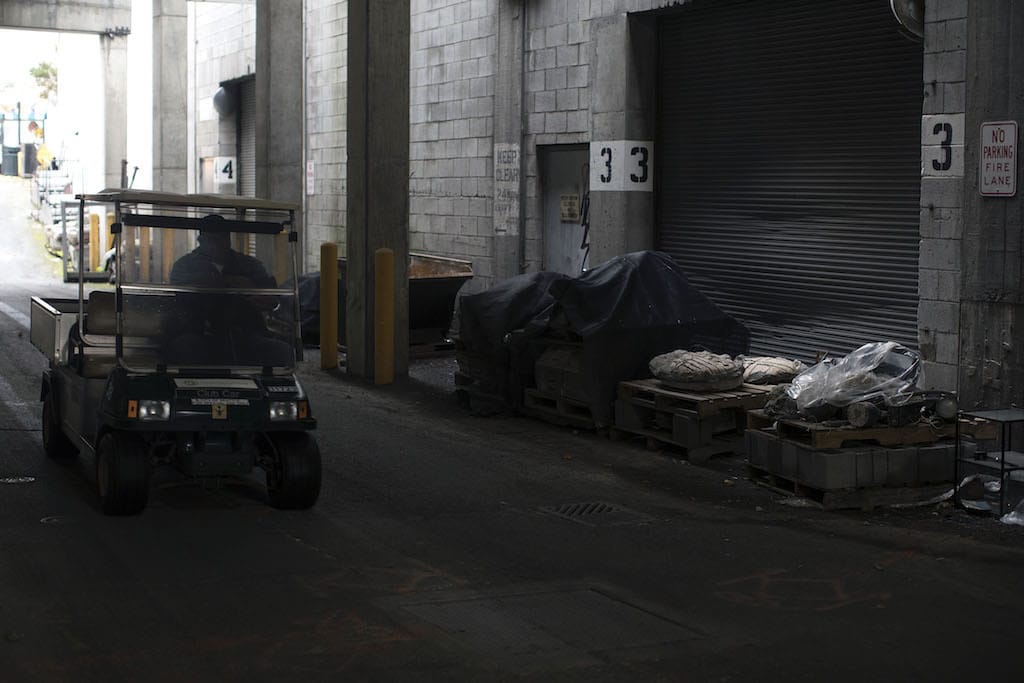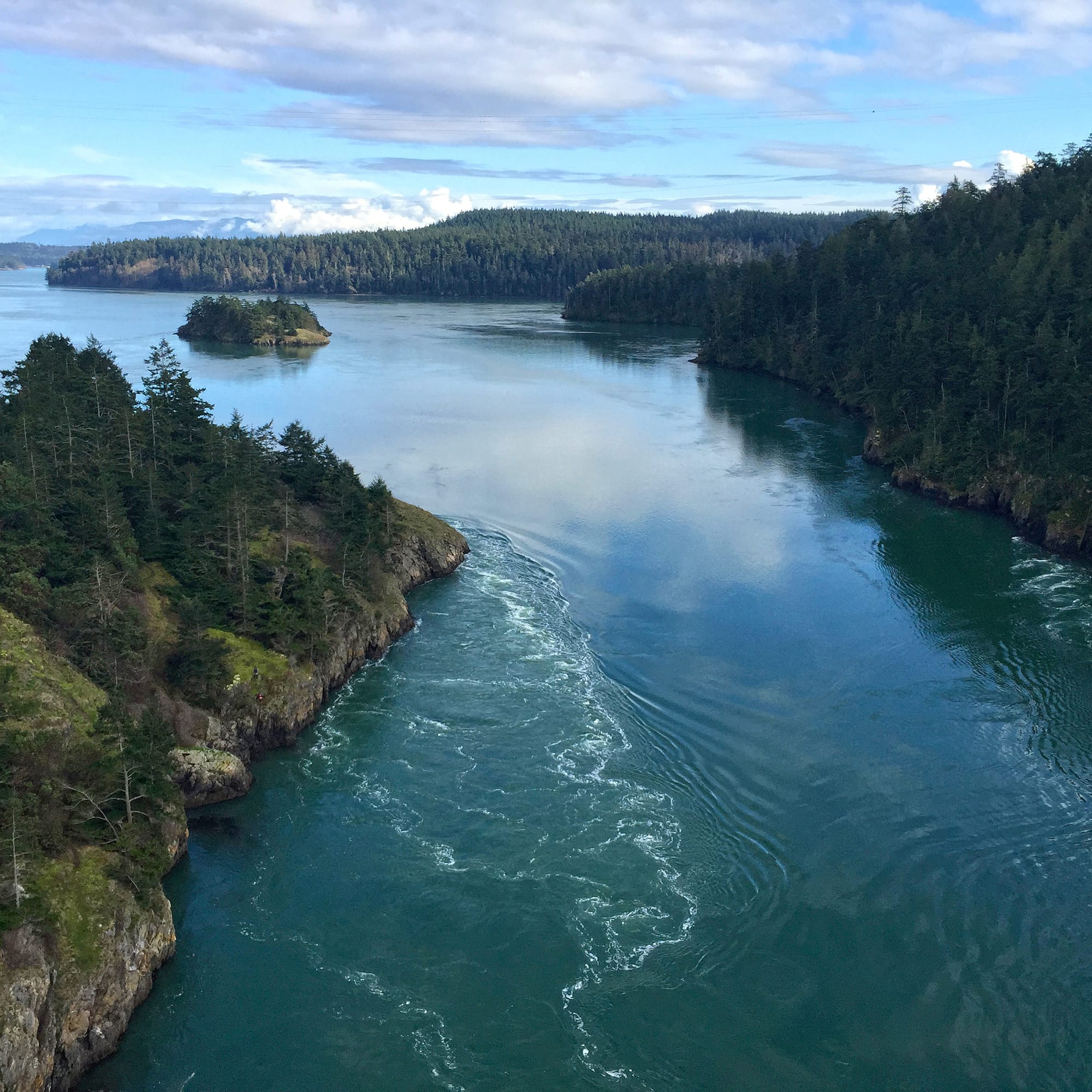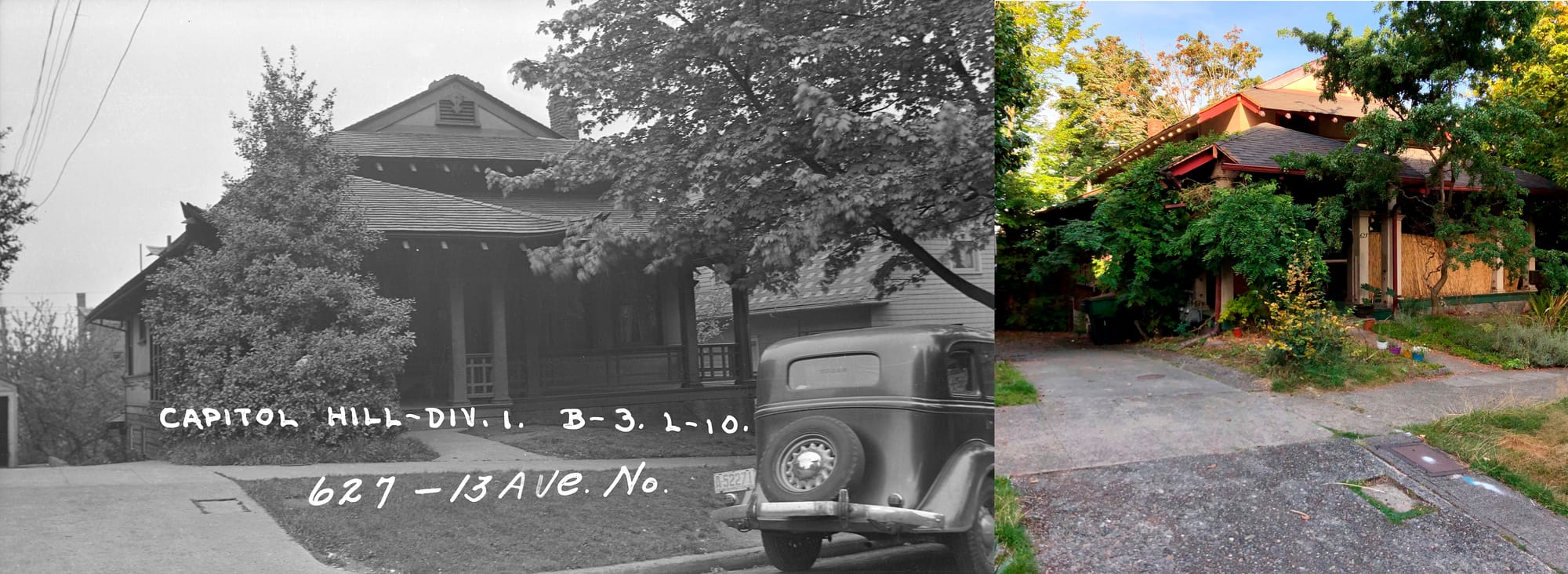In 2007, I began covering historic preservation for Crosscut. It started with a bang — a controversy over a funky diner in Ballard with an intriguing history. It was originally called Manning’s, a diner and coffee chain founded in Seattle, and much later morphed into a Denny’s franchise that was a popular hangout for “old Ballard” residents, especially with its bar. It had a distinctive midcentury Googie design and became a cause célébre for preservationists and a bugaboo for developers. If a humble Denny’s could be designated a city landmark and saved from demolition, couldn’t anything be saved? Were all buildings suddenly sacred? A battle was waged that educated many of us about what is worth saving and what is not, and how to tell the difference.
It became a national story, a case study in the flaws, uncertainties and challenges of historic preservation. The diner was designated a landmark by the Seattle Landmarks Preservation Board, but no limits were imposed on what alterations could be made to it. In other words, it was a landmark without protections. So the owner quickly bulldozed it without warning. The controversy — and people were passionate on both sides — helped me understand the importance of local heritage to identity and city-building.
The preservation community keeps tabs on things. Groups like the public Historic Seattle weigh in when it determines a major structure needs to be saved — The Showbox, for example — and repurposed. The Washington Trust for Historic Preservation issues an annual list of endangered places — as does the National Trust for Historic Preservation and similar organizations in various states, provinces and cities. Some local groups pass out awards for wonderful restoration projects.
But I felt something was missing.
In 2009 I inaugurated my highly selective and opinionated Heritage Turkey Awards — a roundup of heritage and preservation fiascoes in the Pacific Northwest, including Washington, Oregon, Idaho, British Columbia and Alaska. I wanted to highlight examples of what could go wrong to shed light on how hard it is to protect examples of our history and the heritage of our cultural landscapes, like parks and wilderness areas, all around us.
In this 10th year, each Turkey is unique, but they generally fall into a familiar pattern of human ignorance, bungling, bureaucratic stubbornness, selfish behavior, bad luck and sometimes good intentions gone awry. Time can be cruel; efforts to do the right thing can fail or fizzle. The Heritage Turkeys are a grim sampling, but I hope we’ll all learn something from them.
With that, here is this year’s top Turkeys:
Gargoyles in the garbage
Back in 2017, the old Seattle Ice Arena at Seattle Center was demolished for the new Seattle Opera headquarters. During demolition, it was discovered that the original ornamental façade of the building was still intact beneath a 1960s exterior, complete with pedestals, decorations and “gargoyles.” Public outrage ensued as these artifacts were damaged and destroyed by demolition equipment. After the outcry, two of the gargoyles were recovered from the debris. The opera donated them to Seattle Center and the city of Seattle, and it was said that they would be protected and displayed in the future, which quieted public upset. Still, I gave the whole fiasco a Turkey Award that year because it never should have happened.
In 2019, the gargoyle debacle got even worse.
After recovery, the gargoyles weren’t treated like valued art or historic objects. They were stuck in the back of the opera headquarters project, exposed to weather and potential hazards or vandalism, and adjacent to construction rubble. Crosscut’s arts and culture editor Brangien Davis kept a watchful eye on them, somewhat appalled at the cavalier effort to “protect” them. Then, one day, as the construction project was ending, she noticed the gargoyles had disappeared. Turns out workers at the site were told to clean the place up; they assumed the gargoyles were merely construction debris — not surprising, considering how they were treated. The sculptures were hauled off like garbage to the landfill.

Efforts to track them down proved futile. The “saved” gargoyles were ignominiously dumped, and outrage ensued once again. Seattle Center officials said it was a “miscommunication.” King County Councilmember Rod Dembowski was outraged, too, saying on Facebook that what had happened was “sickening.” He’s an ex-officio member of the county’s 4Culture Board and notes that Seattle and King County need to do more — and spend more — to protect our heritage, which he says in this time of rapid change “really plays a role in stitching us together.” The trashing of the gargoyles is emblematic of a larger problem: Preservation is often treated as a headache, and there is little penalty for screwing up.
Gorge graffiti
Wildfire scorched the Columbia Gorge in 2017. But the historic and scenic landscape has been subject to other abuses. In April, damage was done to the Cape Horn Cliffs on the Washington side of the Columbia River, massive basalt slabs that 19th century travelers referred to as “Gibralter.” In this incredible, scenic area, someone tagged the rock face with graffiti visible to boaters and kayakers, according to a report from Portland’s KATU-TV. A representative of the Friends of the Columbia Gorge described it as a “sacrilegious” act. “It shows our separation from nature that somebody would seek to put their own symbol on a natural feature like this.”
When your selfie gets a bear killed
It’s not just taggers who are trying to make a personal statement and damaging nature in the process. Being separated from nature while trying to get close often leads to damage, too. Every year we hear about people filming themselves toppling rock formations, or folks slipping off cliffs and waterfalls while taking selfies. Such acts hurt others, and a tragic example was reported in June at Henry Hagg Lake, about 30 miles from Portland, where people used food and garbage to lure a young local black bear out of the woods next to a local highway so they could snap selfies with it. A bad idea, as it habituates wild bears to humans and increases the chance of an attack. Oregon wildlife officials eventually decided to kill the bear in the name of public safety.
Navy attacks historic district with noise
The U.S. Navy is a foundational part of life in the Pacific Northwest, especially in and around Puget Sound. But it can be a noisy neighbor. Its operations help create an underwater environment that is hard on sea mammals, the Navy is exempt from regulations meant to protect orcas, and loud Navy training flights over the Olympic Peninsula and Olympic National Park have been very controversial.
A hot spot has been on Whidbey Island, home to the Navy’s Growler aircraft, which are used in electronic warfare to jam enemy communications and launch capabilities. The Navy is building more of these planes and increasing the number of training flights based on Whidbey, especially at a second airfield near Coupeville that will see some 24,000 flights per year, about an 18,000 flight increase. The problem: The airfield lies in the Central Whidbey Island Historic District, which encompasses a national treasure, Ebey’s Landing National Historical Reserve.
Ebey’s Landing is a unique public-private, local-national reserve that protects a historic landscape of prairie, farmland and countryside in a state that gives visitors a strong sense of settler conditions of the mid-19th century. It is popular with hikers who can walk atop spectacular bluffs, follow trails through the prairie and circulate down to a beach across from Port Townsend’s Admiralty Inlet. Views encompass the Olympics and Cascades from Mount Rainier to Mount Baker. The area is named after Col. Isaac Ebey, a prominent early Washington pioneer and political figure who settled there with his family. He was beheaded in 1857 by Tlingit raiders, in an apparent retaliation for an earlier attack by the U.S. Navy on a Puget Sound encampment near Port Gamble.
The Navy admits that the noise of increased flights could jeopardize the Whidbey historic district’s eligibility for national landmark status. But despite pleas from locals, the state and national preservation experts, it has refused to conduct more extensive monitoring of noise impacts or to broaden the involvement of stakeholders. The recommendations proposed by the federal Advisory Council on Historic Preservation for working more cooperatively with the community were rejected by the Navy earlier this year, though it agreed to provide funding for the restoration of a historic building at the landing owned by the National Park Service. Still, there’s the noise.

Both state officials and locals have pushed back against the Navy’s decision to move ahead. Washington Attorney General Bob Ferguson has filed suit claiming violations of federal law, and a local group, Citizens of Ebey’s Reserve, has also sued over the project, claiming damage to property values from vibrations and noise. The Navy’s high-handed behavior has also garnered attention from Congress. A provision in the National Defense Reauthorization Act requiring the Navy to do real-time monitoring of Growler noise on Whidbey and the Olympics was successfully inserted into the law this month by Sen. Maria Cantwell and Rep. Rick Larsen. In the meantime, a federal lawsuit by the National Parks Conservation Association is seeking to force the Navy to release information it has compiled about the impact of flights over the Olympics and what alternatives to those fights might be.
The (political) vandals are coming
Every year there are numerous examples of vandalism. Someone splashed black paint inside a historic home tour of a Portland B&B called the White House not long after a $1 million renovation. A historic American Legion post’s 1918 landmark building and flagpole were damaged by vandals shortly before Memorial Day this year. It is unclear if there was a political message, but another example showed that vandalism of historical objects sometimes consciously serves a political purpose: a statue of a pioneer at the University of Oregon in Eugene was vandalized with spray paint and “googly eyes.” The statue’s crotch and a whip the figure is holding were painted red, as if bloody (perhaps a comment on Oregon’s infamous lash law). The statue dates from 1919, and the model for the sculpture was reportedly a trapper who lived in Burns, Oregon. The figure of a vigorous frontiersman exemplifies an era when the Northwest raised and praised idealized images of pioneers. Such statues are being increasingly challenged for their portrayals of colonialism and Manifest Destiny. Some protesters contend the statue is a “monument to white supremacy" and have demanded its removal, comparing it to Confederate statues that proliferated in the South. The sculptor of the University of Oregon statue, Alexander Phimister Proctor, also did a statue of Robert E. Lee that was removed from a Dallas park in 2017.
A bill to remove statues of pioneer missionary Marcus Whitman from Statuary Hall in Washington, D.C., and in the state Capitol building in Olympia was proposed by state Sen. Reuven Carlyle, D-Seattle, earlier this year. His bill claimed: “The Legislature finds that under rigorous, objective review Marcus Whitman does not meet the standards of being one our state's top honorees … ,” even though there is a county, a prestigious private college and a national historic site dedicated to him in Washington state. The bill went nowhere but reflects a growing sentiment of some to reevaluate the supposed heroes of our storied past.
Dumping on The Enchantments
One of the most beautiful spots in the Cascades is The Enchantments, a hugely popular Washington wilderness area with relatively limited access: Day-trippers must be fit and the majority of overnight campers must win permits to camp through a lottery system. Illegal campers are a problem, too. If caught, they are fined $200, which many probably find a small price to pay for a trip to paradise. Still, some 50,000 people pass through the alpine area each year, weather and wildfires permitting. People love it so much that they are literally pooping all over this divine spot. Yes, that’s right. A significant number of these nature lovers are crapping all over the place, even though there are numerous privies for hikers to channel their waste into ecologically secure zones.
In 2018, the U.S. Forest Service reported burying over 400 piles of poop — human poop — and yards of trailing toilet paper contaminating the pristine beauty of the area. Some blame the Instagram generation; others suggest Northwest hikers should take a refresher course on “leave no trace” outdoor principles. Still, how hard can it be to stop leaving turds in one of nature’s great temples? Would these people shit on the floor of the Sistine Chapel? I don’t think so. Then again, I might be giving them too much credit.
Bungalow ravagers
A continuing challenge for preservationists is owners who don’t want landmark consideration interfering with their development plans. An all-too-common tactic: When discovering a structure might be landmark eligible, developers will go in and strip a building of its defining architectural characteristics — pulling down terra cotta exterior ornaments, for example, or allowing neglect and vandalism to take a toll and destroy any chance of the building being saved.

An example occurred this year on Capitol Hill when an owner of two lots planned to redevelop the properties with multiple units. On a parcel on 13th Avenue East, a block off 14th, the so called “Millionaires Row,” is a modest-yet-unusual cottage with “Japonesque” architectural elements dating from 1905. Upturned eaves suggested a tea house, and Japanese fencing gave it a distinctly Asian character. Northwest modern architecture has been heavily influenced by Asia; this was an early example of a locally built home that demonstrated a cultural influence decades earlier. Last spring, representatives of Historic Seattle attended a meeting with the developer and pointed out that the building might be historic (an earlier survey had already deemed it landmark eligible), but the owner disagreed. In September, before any landmark nomination could be submitted, the modest bungalow was stripped of its unique exterior features, which spoiled any landmark case that might have been made. As a result, said Historic Seattle, “Capitol Hill will soon lose a unique and historic structure that has survived for well over a century.” The Capitolhillpast.org blog has documented the bungalow’s intriguing history, and called its impending demolition “distressing.”
Raiders of the lost artifacts
Earlier this year, the Washington Post published a story on an artifact hoarder named Donald Miller, a former missionary who stole, illegally obtained, smuggled and gathered thousands of indigenous and archaeological artifacts from all over the Americas (and some beyond) and turned his Indiana home into an amateur museum. The feds busted Miller in 2014. Ever since, the FBI has been trying to identify and, if possible, repatriate Miller’s ill-gotten gains. They include some 2,000 human bones representing some 500 individuals robbed from Native American burial sites. Experts said it could take decades to sift through and identify the 42,000 objects Miller, since deceased, had amassed.
One Northwest connection: In 2018, investigators returned to the government of Canada prehistoric mammoth tusks that Miller apparently obtained and removed from the Yukon-Alaska border decades ago.
Artifact hunters are active here as well. This year at the Lewis and Clark National Historic Park outside Astoria, Oregon, artifact poachers with metal detectors disturbed a large area. They removed more than a dump-truck load of soil, digging for artifacts in an area that is a known federal archaeological site along the Netul River Trail. The illegal dig heavily damaged the area and also disturbed rare native plants. An investigation is ongoing. The Lewis & Clark National Historic Park encompasses an area where the famous explorers built Fort Clatsop. They wintered there after their expedition to the Pacific and before their return home. Visitors can hike trails from the Columbia to the Pacific and visit a replica of their fort.
Following the Equator
The saga of the vessel Equator is quite something, and it reflects the challenges of maritime preservation. The remnants of the schooner’s wooden hull, beached on the Snohomish River jetty in Everett in the 1950s, are semi-protected under an open-sided shed as it continues to deteriorate. It is on the National Register of Historic Places, but time is taking its toll: Late last year, a large aft section of the vessel fell off. A group of locals saved it years ago, but that group is defunct and technically no one owns it now. It sits in decaying limbo. Yet, despite its condition, it represents a spectacular and romantic history.
In an earlier incarnation, the Equator was a South Seas copra trading vessel built in California in the 1880s. In 1889, the boat was chartered in Hawaii by Robert Louis Stevenson and his wife, Fanny, for Stevenson’s famous travels in the South Pacific. Stevenson went to sea for his lungs, and eventually settled in Samoa. But the Equator was his temporary home during his family’s initial voyages and resulted in his book, In the South Seas. After Stevenson, the boat was converted from sail to steam and later to diesel. It was in the fish-packing business in Alaska, became a tow boat in Puget Sound, and almost sank in Deception Pass. The old hull is the very embodiment of maritime and literary history. Saving such heritage vessels is extremely difficult — the Kalakala and the Wawona are high-profile examples of long-term preservation efforts that resulted in vessels ultimately being scrapped. The Turkey goes not to those who try to save these vessels, but to the conditions that make it so complex and challenging, even when boats have extraordinary pedigrees.
Wait! There's more!
Want to read up on the Heritage Turkey Awards of the past decade? Here is the complete list: 2009, 2010, 2011, 2012, 2013, 2014, 2015, 2016, 2017, 2018.



